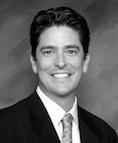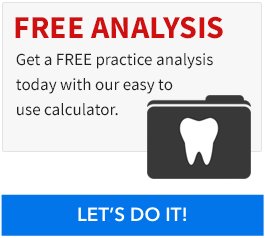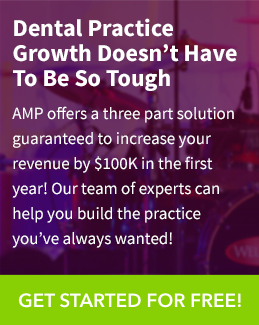Darren Kaberna
Prosper in the face of any challenge by getting focused on what you want in life and business!
-
Home
Home This is where you can find all the blog posts throughout the site.
-
Categories
Categories Displays a list of categories from this blog.
-
Tags
Tags Displays a list of tags that has been used in the blog.
-
Bloggers
Bloggers Search for your favorite blogger from this site.
Three Reasons Sole Prop Dentists Can’t Save for Retirement
- Font size: Larger Smaller
- Hits: 4332
- 0 Comments
- Subscribe to this entry

Three Reasons Sole Prop Dentists Can’t Save for Retirement
As a result of the economic uncertainty in the last few years, we are seeing a gradual turn back to a more pragmatic time where saving a lot of money was cooler than how you spent it. According to the American Dental Association’s 2010 Survey on Investments and Retirement, the average dentist (including specialists) saves about $26,000k per year, 17% of net income, and realizes it’s not enough. Dentists that were surveyed and over 40 years old said they would retire at 67. Dentists asked that same question, but were 40 years old and younger, replied they’d retire at 61. What the heck happens at 40 yrs. old? The idealism of the younger dentist begins to wear off and a fine patina shows through that reveals the business of dentistry is tough - simply put. Compound that with a troublesome stock market and the difficulty of failed transitions and you have a perfect storm, one that damages the hopes of a fine retirement at a reasonable age.
When I share these stories with Darren Kaberna, Founder and President of Accelerate My Practice, a top-notch dental Practice Management firm, we nod in agreement to each other; however, we come at this from different angles. Darren’s techniques hone the skills of the clinician and team: improved communication, improved process/procedure, and boosted productivity. Darren knows too well that his success doesn’t always translate directly into the dentist saving more for retirement. Over breakfast at a big dental meeting, Darren said to me “I can increase productivity 25% but that doesn’t mean their retirement benefits automatically from it”. Darren’s concern for clients goes beyond the dental practice so he wanted to learn more about how to help with life goals. What gets in the way? One saying that rings true is that “the more you save, the less often you chase high returns in the stock market” - it’s a pragmatic and predictable way to build wealth; however, figuring out how to save more is tricky. If you’re a Sole Proprietor, start with getting incorporated.
- Structure, Structure, Structure. When you incorporate, you can take income two ways: as W-2 income or as a distribution of the remaining net profits. Because a sole prop is not taking W-2 income, they have a ball of cash handed to them each month and they’re expected to place in all in the appropriate buckets – take home income, business payables, taxes, etc. No tax withheld accurately = big tax surprises. It never fails, Autumn falls upon us and dentists get the call about “good news, bad news” from their CPA. The good news is your production is up. The bad news is you didn’t adjust your tax with-holdings along the way and you owe an additional $35,000. All of the sudden, funding retirement year-end got the back seat. Having the structure of an S-corp allows for monthly decisions that address the following questions that follow each other like dominos tumbling: how much should i leave in the business checking account at all times? If I’ve met this threshold, can I take additional distributions? If I take distributions, how much should i set aside for taxes? Can I take a W-2 raise if cash has built consistently? Should I fund some in the brokerage account? (remember the 401k is auto-funded in this example).
2. Cash-Hoarding. Sole-proprietor dentists begin to “hoard cash” – like storing acorns for a foreboding winter. That winter they fear is the threat of that tax surprise we discussed earlier. The dentist might hoard cash in their business accounts since they don’t know what to expect in the fall and choose to over-compensate. Because large reserves are trapped in the business checking account they can’t reap the value of being invested and managed properly. First, you establish what a consistent amount of cash is required to have on hand for business payables over 45-60 days, keep no more and no less. If your CPA reconciles monthly, they’ll discover that additional tax will be paid at tax time and an adjustment can be made NOW to withholdings and/or income, rather than year-end. There still could be tax surprises with an S-corp. but it’s mitigated by actively saving for taxes throughout the year and easily being able to decipher how much is yours versus what is going to the IRS.
3. Not your Dad’s 401k. Not just any 401k but one that is NOT commissioned-based, has a generous matching contribution & profit share component, and one that is not expensive to administer. Sole props generally don’t have a 401k in place and opt for a Simple IRA. Simple IRA has lower limits to maximize contributions. A 401k in 2012 allowed for $17,000 for under 50 yrs. old (50 and over is $22,500). Simple IRA limits are $11,500 and $14,000 respectively. Additionally, a Simple IRA can only match up to 3% max. With a proper 401k, we insert up to a 6% match to contribution – plus a profit share analyzed each year. If you have a spouse that is also employed in the practice, you can begin to see the benefit of a generous match to contribution, particularly when the dentist has a generous W-2. Add the profit share and you are cooking with gas.
These limit differences can be seen on an example of Dr. Joe (over 50) who makes the max income limit for retirement plans ($250,000). If Joe had a simple, he can only contribute $21,500 in max match and deferrals. With a 401k (excluding a profit share), the number jumps to $50,000. That is an additional $28,500/yr. that is tax deductible—this would lower the taxes another $11,400 (assuming 40% tax bracket). A lot of folks are advised that a 401k is messier to run and requires a little more expense to manage, although that expense is deductible through the business. An affordable TPA (third party administrator) can easily manage the details with little headache for the dentist.
If you lack structure that allows you to save consistently for your future, consider making changes to the same old way of doing things. You just might look back at the end of the year and be astonished at how much you saved – and it was easy. Incorporating as an S-corporation is often ignored by a CPA as an unnecessary process that costs a few bucks. They don’t require it to advise you on tax and prepare your return. The challenge is that they often don’t view the opportunity as one that has your retirement at heart. Their advice to you isn’t wrong, it’s just not the best advice if you want to save a lot of money.
Steve Steinbrunner
Steve Steinbrunner is Vice President of Business Development for Four Quadrants Advisory, Inc. Steve has held positions of leadership and management for two of the largest dental supply companies in the U.S. Also a Registered Investment Advisor, his firm provides accounting, fee only investing, and custom financial planning - exclusively for dental professionals that are serious about better cash flow and saving more for their retirement. Learn more about the Four Quadrant’s guarantee and Dental Wealth Work-up and change your financial future for good.
- Some people will always buy your most expensive product in your dental office - Dental Patient Acceptance Oct 19
- Off The Cusp: Yes, Your Dental Practice Can Be Fun! - Dental Marketing Oct 31
- What's a Facebook Follower Worth to a Dental Office? - Dental Marketing Nov 02
- Dental Marketing to New Patients - Dental Marketing Nov 06
- How will the election results impact your dental practice? - Dental Practice Management Nov 16
Want more great insight into accelerating your practice?
Get AMP blogs delivered directly to your inbox! Subscribe Today!









